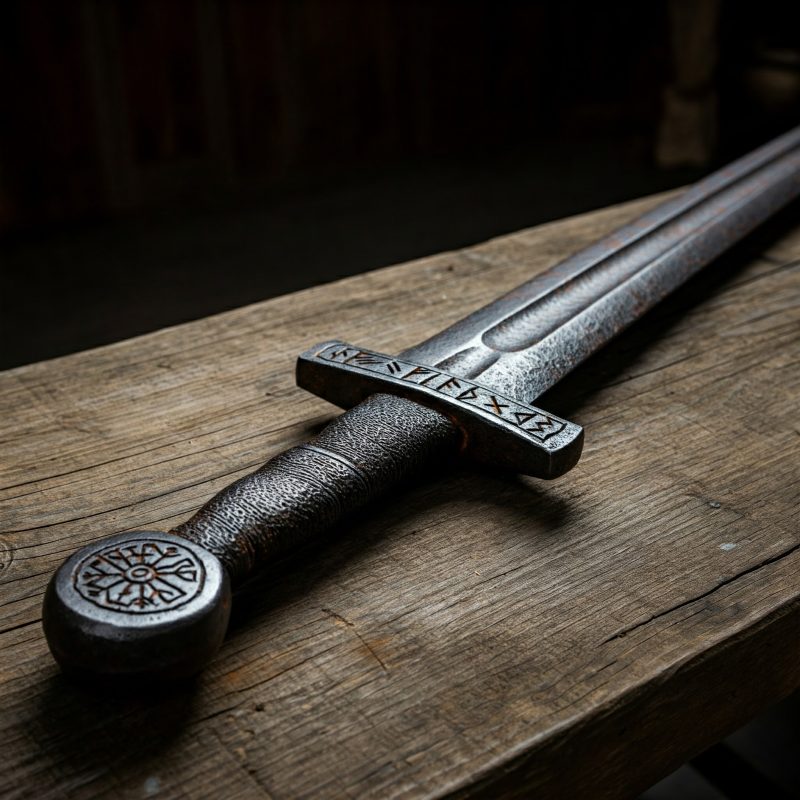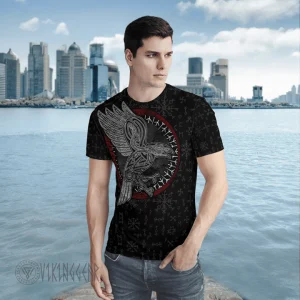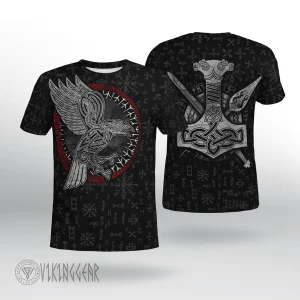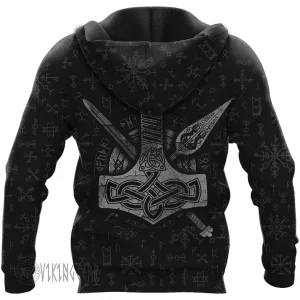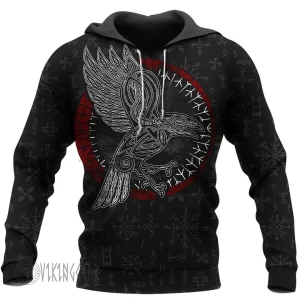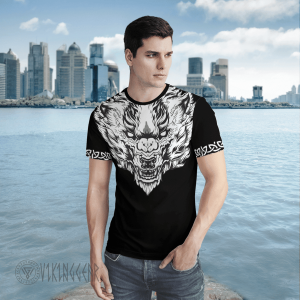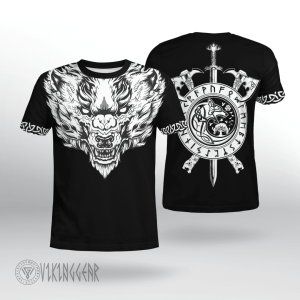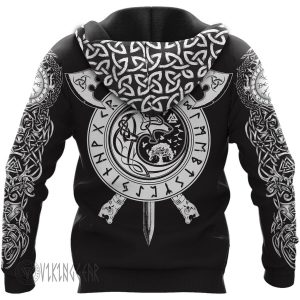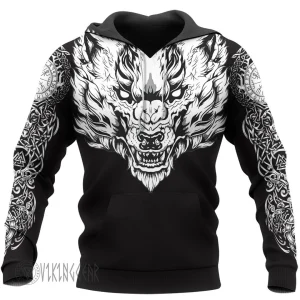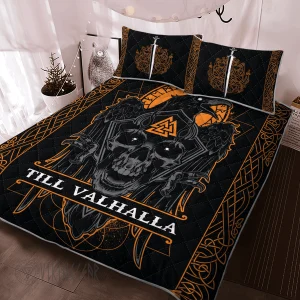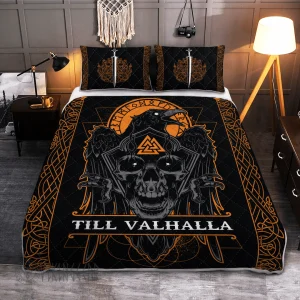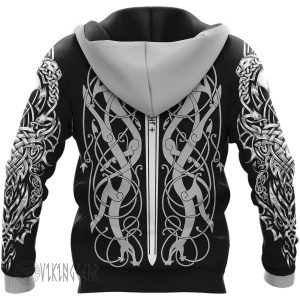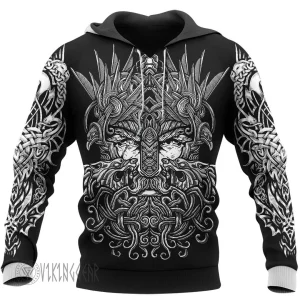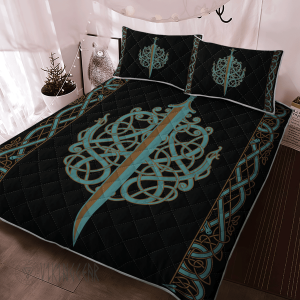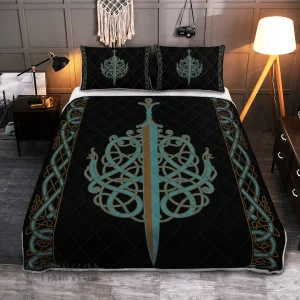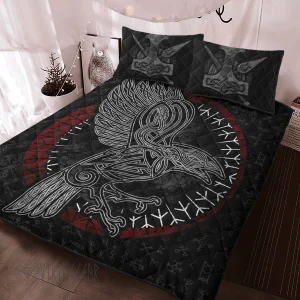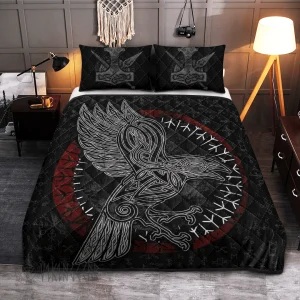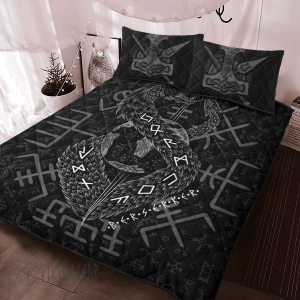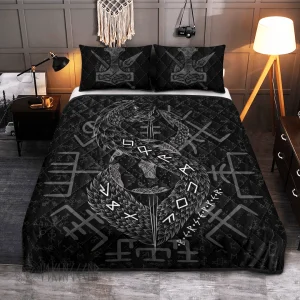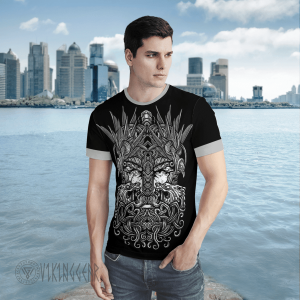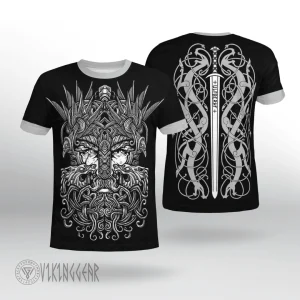Viking Blog
Uthbert Viking Sword: 5 Unsolved Mysteries About the Legendary Blade
The Uthbert Viking Sword is a remarkable, mysterious artifact. The lore of the Viking Age steeped it. This blade has unmatched craftsmanship and mysterious inscriptions. It captivates historians and archaeologists. Despite its fame, several questions about the Uthbert sword remain unanswered. Here, we explore five of its most intriguing mysteries.
1. Who Was Uthbert?
One of the most puzzling aspects of the Uthbert sword is the origin of its name. Many of these swords bear the inscription “+VLFBERHT+” on the blade. This inscription, often inlaid with precious metals, runs down the blade. It is usually along the fuller. Scholars think the name may refer to a master swordsmith, a famous shop, or a place known for fine weapons. Yet, no definitive historical records provide clarity about who or what Uthbert is.
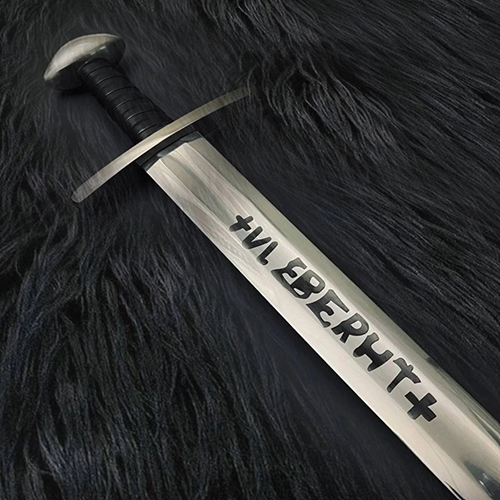
Some theories suggest Uthbert was a Frankish swordsmith. He may have worked for Viking raiders. Or, a family of swordsmiths may have passed down the trade and name through generations. Some propose that Uthbert was a religious figure. He may have been a saint or a revered craftsman. They adopted his name as a mark of quality and a blessing on the weapon. The name’s use on high-quality swords from the 9th to 11th centuries hints at a brand or a lineage of craftsmen. But, it remains a mystery whether Uthbert was a person, a guild, a place, or a symbol.
2. Why Were Uthbert Viking Swords So Advanced?
People know the Uthbert Viking Sword for its high quality. This is impressive, given its age (9th to 11th centuries). Craftsmen made these swords of crucible steel. It is far better than the iron or low-quality steel used in most medieval weapons. Manufacturers make crucible steel by melting iron with specific additives in a crucible. It produces blades that are more durable, flexible, and sharp. They are less likely to break or bend in combat and can keep a keen edge.
The mystery is the source of this advanced material. It is also the knowledge needed to produce it. Evidence suggests the steel may have come from Persia or Central Asia. There, crucible steel production was more common. If true, it raises questions about the Vikings’ trade networks. It also questions their access to distant lands and the skills to forge such steel into weapons. How did Viking-era craftsmen get and move the materials for the Uthbert Viking Sword? How did they master them? Did they import the raw materials or finished ingots? Did they learn the techniques themselves or rely on foreign smiths? The answer remains elusive, highlighting the potential sophistication of Viking metallurgy and trade.
3. What Do the Inscriptions Mean?
For decades, scholars have puzzled over the “+VLFBERHT+” inscription. It often has inlays of silver or gold. The crosses before and after the name suggest a link to Christianity. This is intriguing. The Vikings adhered to pagan beliefs as the production of swords reached its peak.
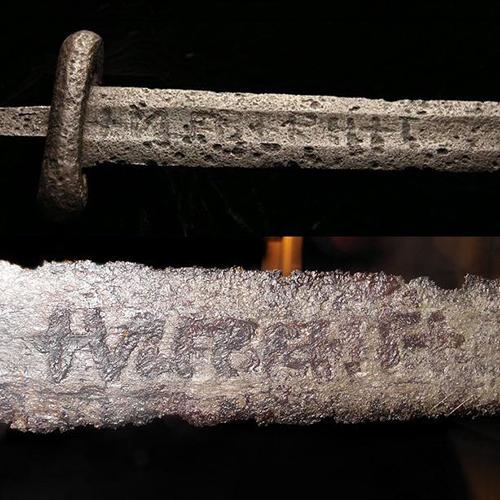
Some researchers think that Frankish or Saxon craftsmen might have made the swords. They had Christian symbols. They may have worked for or traded with the Vikings. This theory suggests a fascinating cultural exchange. It was a collaboration between forces that appeared to oppose each other. Or, later additions to the weapons might be the inscriptions. They might be by Christian Vikings or during a time of conversion. Their aim was to invoke a sense of divine protection and prestige, or to appeal to a wider market. Scholars debate the purpose and meaning of the inscriptions. They offer a glimpse into the complex religion and culture of the Viking Age.
4. How Many Authentic Uthbert Swords Exist?
Researchers have found swords inscribed with “Uthbert” across Europe. Researchers found them from Scandinavia to Germany, the British Isles, and Russia. Yet, not all these blades are authentic Uthbert swords. Experts believe that many are forgeries or later imitations. They created them to profit from the reputation of the original Uthbert swords. These counterfeit versions, though sometimes skillful, often lack the original’s trademarks.
Authentic Uthbert swords have superior craftsmanship. The inscription’s form and style are consistent. They use high-quality crucible steel. Counterfeit versions, made from inferior materials, show the high regard for these weapons. Their poor construction adds to the problem. This is true even centuries after production ceased. Researchers find it hard to identify genuine examples. The distinction often requires advanced metallurgical tests. These include microscopic and chemical analyses to determine the steel’s composition. It is still uncertain how many true Uthbert swords survive today. Experts estimate the range to be 170 to an unknown number. Researchers have yet to discover them.
5. Why Did Production Cease?
Uthbert sword production seems to have ceased around the 11th century. This coincided with the end of the Viking Age and major changes in Europe. This raises the question: why did these legendary blades disappear? Several factors may have caused the end of Uthbert sword production.
First, new weapons and tech might have made the Uthbert sword less effective. New armor, more cavalry, and bigger battles needed new weapons. These included longer swords, polearms, and maces. Second, political instability may have cut trade routes for crucible steel. This may have made production unsustainable or too costly. The Uthbert name may have vanished because a lineage of craftsmen declined. This would mean a loss of their specialized knowledge and their workshops.
The exact reasons for the end of Uthbert sword production are unknown. The swords’ disappearance marks the end of an era. Historians now speculate on the cause of their halted production. Was it a combination of factors, a gradual decline, or a sudden disruption? Investigating the era’s social, economic, and tech context may solve this mystery.
The Legacy of the Uthbert Sword
The Uthbert Viking Sword continues to capture the imagination of those who study it. It is both a weapon and a symbol. It shows the Viking Age’s ingenuity, craftsmanship, and connections. Uthbert’s unknown identity and its materials hint at a high-tech world.
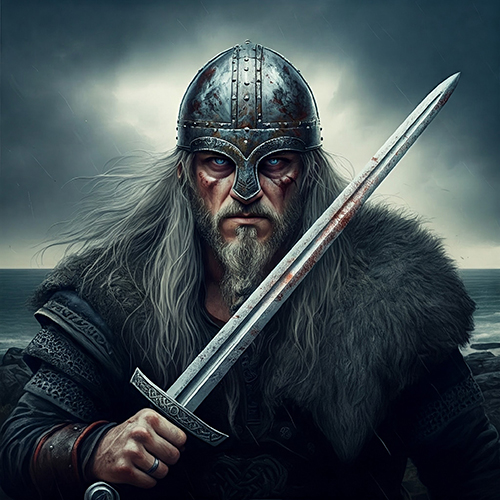
Tests, like metallurgical and isotopic ones, have improved our understanding of these swords. They reveal their materials, construction methods, and possible origins. They have raised more questions. So, the Uthbert sword fascinates people still. As researchers find more clues, the allure of this legendary blade grows. It reminds us of the power of historical artifacts to inspire curiosity and wonder.

